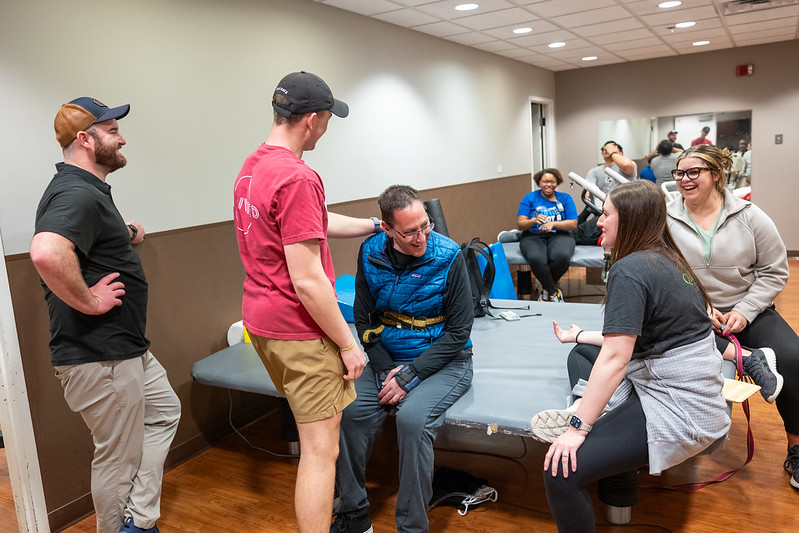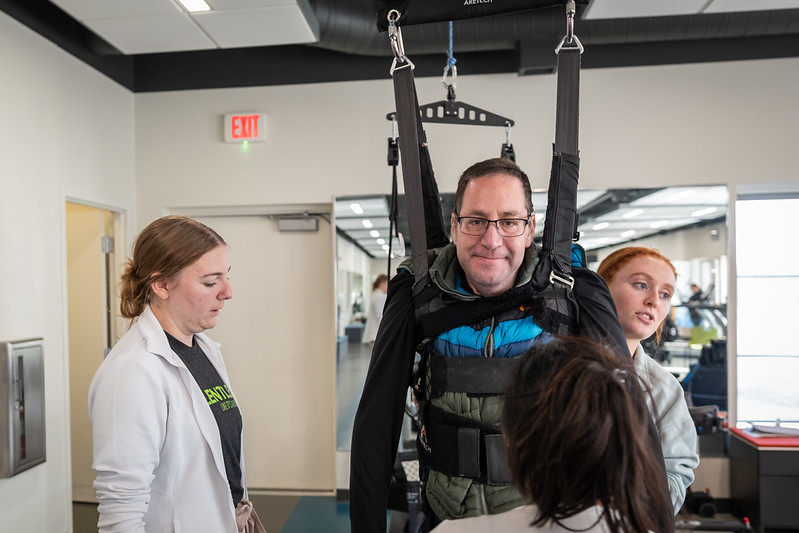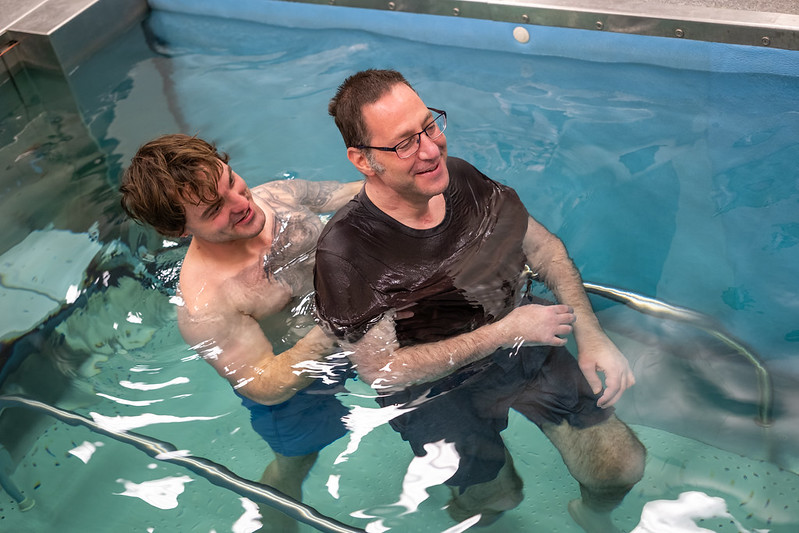July 9, 2024. 6:30 am. Clear—a good morning. The streets of Nantucket are perhaps a little thinner than they were a week prior for the Fourth of July celebrations. Still, the seasonal bustle of 70,000 continues. The summer is still young. Steven Cohen sets out for his morning run. It’s his typical, consistent route of three miles. Enough before the day’s work begins to mentally prepare for tasks ahead. Steven gets onto a straight road about a half mile from his home.
From Steven and his wife Jennifer Cohen’s perspectives, Nantucket was the perfect place to settle down nearly twenty years ago. Together, they founded and run a law firm—they raised a daughter, Sasha. The town of 18,000 is their version of a New England paradise.
7:00 am. Steven is in the ambulance speeding away towards Massachusetts General Hospital in Boston. He had been hit by a car.
“I’m perseverant”
Steven’s spinal cord injury offered multiple paths for rehabilitation before him—a host of options to consider. He was grateful for the time he could get at Spaulding Rehabilitation Center in Massachusetts. “I was told I could go the route that many from Spaulding have,” says Steven. “I could transition to outpatient therapy—a handful of hours a week, getting an apartment nearby in the city, and hiring a skilled nurse and home health aide.”
One of Steven’s therapists at Spaulding told him about QLI—there had been other Spaulding patients who had come to QLI and had spoken highly of their experience. It appealed to Steven, but it was 1500 miles from his home and family. At QLI, Stephen wasn’t facing a handful of therapy hours a week, but the opportunity for multiple hours daily. He wouldn’t have to go to the trouble of hiring a staff to help him meet his basic needs—a team would be there for him. If he wanted the best long-term results, he had to sacrifice in the short term. He decided QLI was the place for him.
It clicked further for Steven once he arrived. “I wasn’t just another patient,” he says, “I was Steven. The team were experts in what my program would look like and what we would work on, and they were also
“I’m perseverant,” he emphasizes. “The way I saw it, there were two ways I could let myself be after the injury. I could aimlessly struggle, and let any anxiety, fear, or worry wash over me and hold me in place. Or I could work.” That work began with an acceptance that “things would be slow. Glacially slow at times.” But all it would take was a metaphorical baby step. Just a little every day. At QLI, Steven wakes up each day asking, “What am I going to do today? What am I going to do to make everything a little bit better? Over time, over months, it adds up.”
Moments of Breakthrough
The sessions of physical therapy are part of this manifold effort of just a little every day, starting with retraining the neural connections in his legs. The Zero-G harness device, emblematic of many clients’ programs at QLI, was key to Steven’s recovery. It runs a track down the length of QLI’s Gait Lab. When in the harness, which can lift any percentage of a client’s body weight and provide fall protection, a client can walk this length so the user and therapist can focus on gait mechanics and correct execution. One day, while working with physical therapist Connor Davis, as the straps are readjusted and the two of them move through a routine of sitting to standing, monitoring balance, Steven relates the story of a Nantucket woman who, herself, a runner, was hit by a car. The goal and desire were crystal clear for him
With occupational therapist Melissa Faller, their sessions focus on a return to greater hand function. On a table, Melissa will place rubbery shapes with suction ends that stick to the table. It is Steven’s goal to move his arms out to the table, grasp the shape, pick it up, and move it to the other end of the table. Sure, the lawyer from the East Coast does not dream of days that are occupied by these relatively small-scale activities. With a high-level spinal cord injury like Steven’s, for activities such as dressing, eating, and toileting, Steven requires a great deal of assistance. “It can be easy to rely on others after such a high-level injury,” says Melissa, “but Steven wants to have control. We break down tasks and activities. If the goal is to put on a shirt, but assistance is needed for a significant amount of it, we break it down further, incrementally, finding what part of the task can be accomplished, while keeping our eyes on the big goal and working towards that.”
The moments of breakthrough have already arrived, small ones, but they act as huge signs that change is real, progress is happening, and all goals can still be in focus and achieved. “One day, I was able to adjust my glasses by raising my hand to my eyes. It was emotional—the first functional thing I had done on my own in five months. To move and do something that I needed was incredible. I can somewhat control my wheelchair with the hand controls, and with a brace over my hand, I can now feed myself—it feels more human, more myself again.” Collaboration with the team extended towards providing time to work. Working with assistive technology therapist Olivia Ollis to master hands-free navigation of his smartphone, Steven can readily attend virtual work meetings, preserving a facet of this
The future for Steven is looking up, strongly buoyed by his QLI program. “Seeing success in front of me has been tremendous—many of the questions I’ve had have been addressed. It began with Can I walk? Can I use my hands? And has grown to how can I potentially cook? Drive? Feed myself? All the life functions—the things you need to do in life.” With addressing those questions, I’ve grown comfortable and have felt better—I’m not a patient.” His daughter, while a sophomore at Tulane, visited Steven for the first time in months in early 2025—“she couldn’t believe how much progress I’ve made,” he says with a smile. “So that made me feel good.” And when the day he completes his inpatient rehabilitation finally arrives, the chances are significant that many others will be echoing her observations.
Categories: Client Story, Neuroplasticity, Physical Therapy, Spinal Cord Injury
